Have you ever wondered if you can use a pressure cooker for sterilizing mushroom substrate? Look no further, as we have the answer for you! In this article, we will explore the possibility of using a pressure cooker for this purpose. Sterilizing mushroom substrate is a crucial step in the process of growing mushrooms, and finding the most efficient method is essential. Join us as we investigate the effectiveness of a pressure cooker as a sterilization tool and uncover the benefits it may bring to your mushroom cultivation journey.
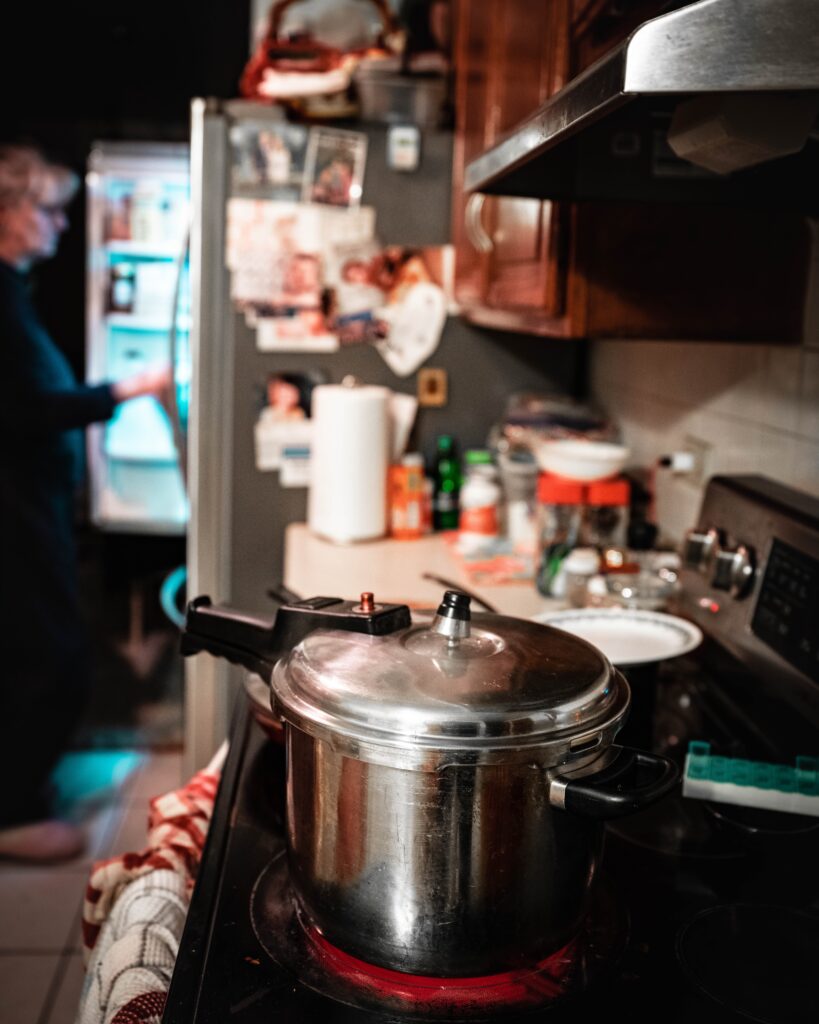
Benefits of Using a Pressure Cooker for Sterilizing Mushroom Substrate
Increased Efficiency
Using a pressure cooker for sterilizing mushroom substrate offers several benefits, one of which is increased efficiency. With a pressure cooker, you can achieve sterilization in a shorter amount of time compared to other methods. The high temperature and pressure generated inside the pressure cooker create an environment that effectively eliminates microorganisms, ensuring a sterile substrate for mushroom cultivation.
Time-Saving
Time is a valuable resource for any mushroom cultivator, and using a pressure cooker for sterilization can significantly save time. Compared to traditional methods such as boiling or using an autoclave, a pressure cooker can sterilize the mushroom substrate more quickly. This time-saving aspect allows you to process larger batches of substrate efficiently, ultimately maximizing your overall productivity.
Uniform Sterilization
Ensuring uniform sterilization is crucial for successful mushroom cultivation. Uneven sterilization can create opportunities for contamination and compromise your entire batch of substrate. However, a pressure cooker provides reliable and consistent sterilization throughout the substrate. The high temperature and pressure penetrate all parts of the substrate, leaving no room for potential contaminants. This uniform sterilization greatly enhances the chances of healthy mushroom growth and reduces the risk of contamination.
Versatility
Apart from its primary function of sterilizing mushroom substrate, a pressure cooker is a versatile tool that offers other benefits for mushroom cultivation. Many pressure cookers come with different features and functions, allowing you to use them for various tasks in the cultivation process. For example, some pressure cookers can also be used for cooking meals, which adds convenience and value to your investment. The versatility of a pressure cooker makes it a multi-purpose tool that can cater to your different needs.
Understanding Sterilization
What is Sterilization?
Sterilization, in the context of mushroom cultivation, refers to the process of eliminating any viable microorganisms from the mushroom substrate. It is crucial because it creates a clean and sterile environment for the mushrooms to grow and prevents any potential contaminants from competing or interfering with the mushroom mycelium’s growth. Sterilization ensures a healthy and successful mushroom cultivation experience.
Why is Sterilization Important for Mushroom Cultivation?
Sterilization is essential for mushroom cultivation because it prevents the growth of competing organisms such as bacteria, molds, and other fungi. These organisms can easily contaminate the substrate and hinder the growth of mushrooms. Additionally, sterilization minimizes the risk of diseases or infections that can affect the health of the mushrooms, leading to poor yields or complete failure of the cultivation process. By achieving a sterile substrate, you provide the optimal conditions for the mushroom mycelium to thrive and produce abundant fruiting bodies.
Methods of Sterilization
There are different methods of sterilizing mushroom substrate, each with its advantages and disadvantages. Some commonly used methods include boiling, using an autoclave, and using a pressure cooker. Boiling involves subjecting the substrate to high temperatures by immersing it in water and maintaining the temperature for an extended period. Autoclaves are specialized devices that use steam under pressure to achieve sterilization. Pressure cookers, on the other hand, utilize heat and pressure to create a sterile environment. Pressure cookers offer a cost-effective and practical solution for small to medium-sized mushroom cultivators.
Pressure Cooker as a Sterilizing Device
How Does a Pressure Cooker Work?
To understand why a pressure cooker is suitable for sterilizing mushroom substrate, it is important to know how it works. A pressure cooker is a sealed cooking vessel that generates high pressure and temperature. It achieves this by trapping the steam produced during the cooking process, which raises the internal pressure. The increased pressure raises the boiling point of water, thereby allowing the temperature inside the pressure cooker to exceed the normal boiling point of 100 degrees Celsius (212 degrees Fahrenheit). The combination of high pressure and temperature effectively sterilizes the mushroom substrate, eliminating any contaminants.
Why Use a Pressure Cooker for Sterilizing Mushroom Substrate?
There are several reasons why using a pressure cooker for sterilizing mushroom substrate is advantageous. Firstly, pressure cookers create a sealed and controlled environment that prevents the entry of external contaminants. The high pressure and temperature generated inside the pressure cooker effectively eliminate microorganisms, ensuring a sterile substrate. Secondly, pressure cookers are easily accessible and cost-effective compared to specialized sterilization equipment. They offer a practical and affordable solution for small to medium-sized mushroom cultivators. Lastly, pressure cookers are versatile and can serve multiple purposes in addition to sterilization, making them a valuable tool for any cultivator.
Considerations for Using a Pressure Cooker
While pressure cookers offer numerous benefits for sterilizing mushroom substrate, there are a few considerations to keep in mind. Firstly, it is important to choose a pressure cooker with a suitable size and capacity for your needs. Consider the volume of substrate you will be sterilizing and ensure that the pressure cooker can accommodate it comfortably. Additionally, the material of the pressure cooker is important. Stainless steel pressure cookers are generally recommended as they are durable, easy to clean, and resistant to corrosion. Lastly, pay attention to the features and controls of the pressure cooker, such as pressure and temperature settings, as they can affect the sterilization process.
Selecting the Right Pressure Cooker
Size and Capacity
When selecting a pressure cooker for sterilizing mushroom substrate, consider the size and capacity that best suits your needs. Assess the volume of substrate you typically work with and choose a pressure cooker that can accommodate it comfortably. It is important to leave enough headspace inside the pressure cooker to allow for proper circulation of steam and heat. Keep in mind that overcrowding the pressure cooker may result in inefficient sterilization.
Material
The material of the pressure cooker is vital for its durability, ease of cleaning, and resistance to corrosion. Stainless steel pressure cookers are highly recommended because they are robust, capable of withstanding high pressure, and resistant to rust. Stainless steel also provides a smooth surface that is easier to clean, minimizing the chances of residue or contaminants lingering on the cooker’s walls.
Features and Controls
Consider the available features and controls of the pressure cooker. Some pressure cookers have adjustable pressure and temperature settings, allowing you to fine-tune the sterilization process according to your specific requirements. Having control over these factors can enhance the efficiency and accuracy of your sterilization. Look for pressure cookers with clear and easy-to-read pressure gauges and intuitive controls that simplify the sterilization process.
Safety Features
Ensure that the pressure cooker you choose has adequate safety features to prevent accidents or mishaps during the sterilization process. Look for features such as pressure release valves, secure locking mechanisms, and automatic shut-off systems. These safety features not only protect you from potential hazards but also contribute to the overall reliability and longevity of the pressure cooker.
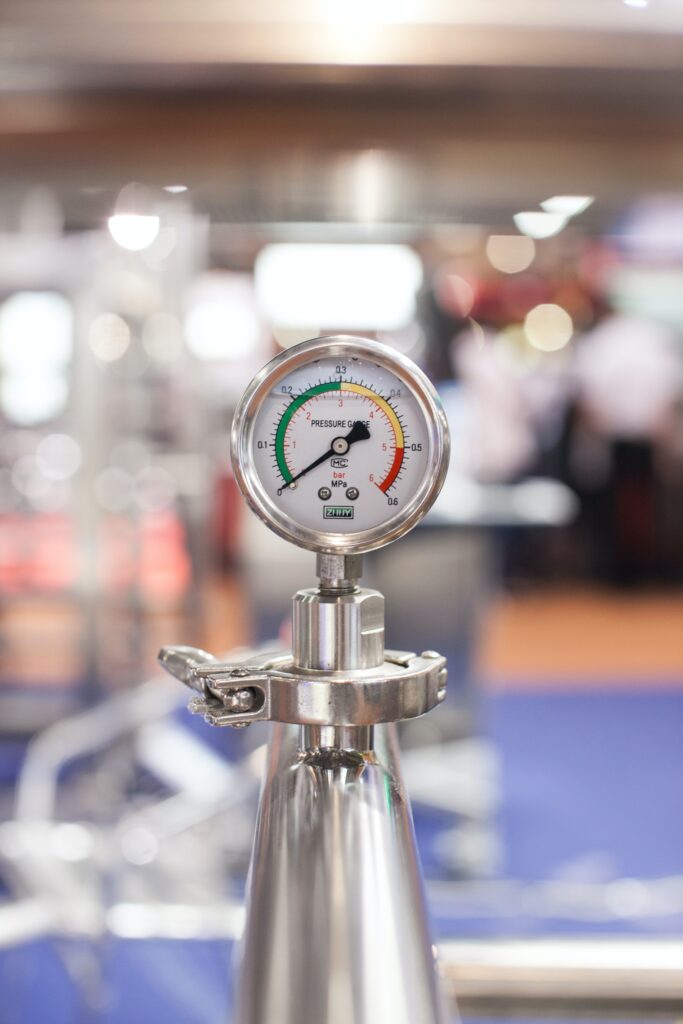
Preparing the Mushroom Substrate
Selecting the Substrate
The substrate is the material on which the mushroom mycelium will grow and develop into fruiting bodies. There are various substrates to choose from, including sawdust, straw, coffee grounds, and wood chips, among others. Each substrate has its own advantages and considerations, so it is important to select the substrate that best suits the type of mushrooms you are cultivating and the resources available to you. Research and consultation with experienced cultivators can help you make an informed decision.
Preparing the Substrate
Before subjecting the substrate to sterilization, it is essential to prepare it properly. This involves breaking down and conditioning the substrate to create an optimal environment for mushroom growth. Depending on the substrate used, preparation methods may include soaking, chopping, grinding, or pasteurizing. Follow recommended techniques and guidelines specific to the substrate you have chosen to ensure its readiness and suitability for the sterilization process.
Packaging the Substrate
Sterilizing the substrate effectively requires proper packaging. Use sterilizable bags or containers that can withstand the high temperatures and pressure of the sterilization process. Fill the bags or containers with the prepared substrate, leaving enough headspace for expansion during sterilization. It is important to seal the packaging securely to maintain a sterile environment within and prevent contamination from entering during the sterilization process.
Preparing the Pressure Cooker
Cleaning and Sanitizing the Pressure Cooker
Before using a pressure cooker for sterilization, it is crucial to clean and sanitize it thoroughly. Even though pressure cookers are sealed and subject to high temperatures during sterilization, any residual debris or contaminants can still compromise the sterility of the substrate. Use mild detergents and warm water to clean the interior and exterior surfaces of the pressure cooker. Rinse it thoroughly to ensure no detergent residue remains. Additionally, sanitizing the pressure cooker by using a diluted bleach solution can provide an extra layer of protection against potential contaminants.
Adding Water to the Pressure Cooker
Water plays a vital role in the sterilization process as it helps generate the necessary steam and pressure. Follow the manufacturer’s instructions regarding the appropriate amount of water to add to the pressure cooker. Usually, pressure cookers require a specific minimum amount of water to create enough steam and pressure for sterilization. Too little water may result in insufficient pressure, while too much water may hinder the efficiency of the process. Striking the right balance is necessary for optimal sterilization.
Setting up the Pressure Cooker for Sterilization
Once the pressure cooker is clean and filled with the appropriate amount of water, it is ready to be set up for sterilization. Place the prepared substrate packages inside the pressure cooker, ensuring they are adequately spaced apart to allow for proper circulation of steam and heat. Avoid overcrowding the pressure cooker, as this can lead to uneven sterilization. Follow the specific instructions provided by the pressure cooker manufacturer regarding the arrangement of the substrate packages.
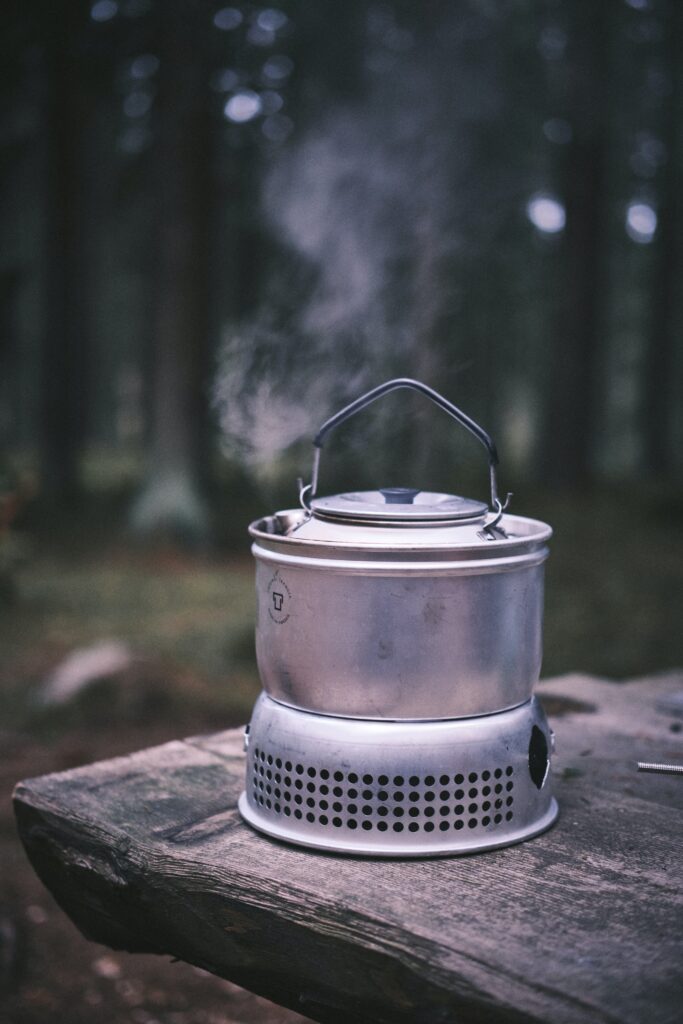
Sterilization Process
Loading the Pressure Cooker
Carefully load the pressure cooker with the prepared substrate packages, arranging them in a manner that allows for even steam distribution and efficient sterilization. Ensure that the packages are not compressed or tightly squeezed together, as this can hinder proper sterilization. Leaving enough space between the packages facilitates the circulation of steam and heat throughout the pressure cooker, promoting uniform sterilization.
Setting the Time and Pressure
Refer to the sterilization guidelines recommended for the type of mushroom substrate you are using. Different substrates may have specific time and pressure requirements for effective sterilization. Generally, a pressure of around 15 psi (pounds per square inch) and a sterilization time ranging from 60 to 90 minutes are common for most mushroom substrates. However, it is essential to consult reliable resources or experienced cultivators to determine the appropriate time and pressure settings for your specific substrate.
Sterilization Duration
The duration of sterilization primarily depends on the type of substrate, the amount of substrate, and the pressure cooker’s size and capacity. Maintaining the recommended pressure and temperature levels for the specified duration ensures the complete elimination of microorganisms. However, it is crucial to avoid prolonging the sterilization duration unnecessarily, as this can potentially lead to degradation or overcooking of the substrate.
Cooling and Opening the Pressure Cooker
After the sterilization process is complete, the pressure cooker needs to cool down before it can be safely opened. Follow the manufacturer’s instructions on the cooling process and duration, as different pressure cookers may have varying cooldown times. Rapidly releasing the pressure or opening the pressure cooker prematurely can cause sudden changes in temperature and pressure, potentially damaging the substrate or risking personal injury. Allow the pressure cooker to cool naturally, ensuring it reaches a safe temperature before opening.
Post-Sterilization Steps
Inoculation
Once the sterilization process is successfully completed, it is time to inoculate the sterile substrate with mushroom spores or mycelium. This involves introducing the desired mushroom culture into the substrate to initiate the growth of mycelium. Inoculation should be carried out in a clean and sterile environment to prevent any potential contamination. Follow proper sterile techniques, such as using a laminar flow hood or a glove box, to minimize the risk of introducing unwanted microorganisms during the inoculation process.
Incubation
After inoculation, the sterilized substrate needs to be transferred to an incubation chamber or area. This allows the mycelium to colonize and spread throughout the substrate, forming a network of interconnected hyphae. The incubation chamber should be maintained at the optimal temperature and humidity levels suitable for the specific mushroom species being cultivated. The duration of the incubation period varies depending on the mushroom species and environmental conditions, ranging from a few weeks to several months.
Observation and Maintenance
During the incubation period, regularly monitor the progress of mycelium colonization within the substrate. Look for signs of contamination or abnormal growth, such as the presence of molds or bacteria. Maintain proper environmental conditions by regulating temperature, humidity, and air circulation in the incubation area. Additionally, ensure that the substrate remains adequately moist without becoming overly wet or dry. Regular maintenance and observation enable early detection of any issues and provide an opportunity to address them promptly, minimizing the risk of crop failure.
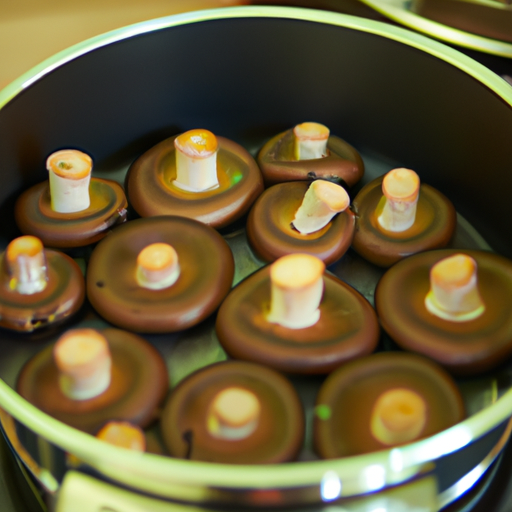
Troubleshooting
Contamination Issues
Contamination is a common challenge in mushroom cultivation, and it can negatively impact the success of your efforts. To address contamination issues, it is essential to identify the source of contamination. Potential sources include unsterilized equipment, inadequate sterilization of substrate, contaminated inoculum, or environmental contamination. Take necessary steps to identify and eliminate the source of contamination, such as improving sterilization techniques, using reliable and clean inoculum sources, and maintaining a clean and sanitized growing environment.
Insufficient Sterilization
If you encounter issues with insufficient sterilization, it is crucial to review your sterilization process and identify possible factors contributing to the problem. Ensure that you are following the recommended time and pressure guidelines for sterilizing your specific mushroom substrate. Check for any potential obstructions or malfunctions in the pressure cooker that may be affecting its ability to achieve and maintain the necessary pressure and temperature. Adjusting sterilization parameters, such as increasing time or pressure, may also be necessary to achieve complete sterilization.
Equipment Malfunction
Equipment malfunctions can occur even with well-maintained pressure cookers. If you encounter any issues, such as pressure leakage or failed pressure release mechanisms, it is important to address them promptly. Regularly inspect your pressure cooker for any signs of wear, damage, or malfunction. If needed, consult the manufacturer’s customer support or seek professional assistance to repair or replace the malfunctioning components. Proper maintenance and timely repair ensure the reliability and longevity of your pressure cooker as a sterilization device.
Additional Considerations
Alternative Sterilization Methods
Although using a pressure cooker is a common and effective method for sterilizing mushroom substrate, there are alternative sterilization methods worth considering. Some cultivators opt for using an autoclave, which offers greater precision and control over sterilization parameters. Additionally, methods like pasteurization, chemical sterilization, and irradiation can be suitable for specific circumstances or substrates. It is important to research and understand the advantages, disadvantages, and requirements of each method to determine the most suitable option for your mushroom cultivation needs.
Professional Sterilization Services
For large-scale mushroom cultivation or commercial operations, professional sterilization services may be available. These services utilize advanced equipment and expertise to ensure efficient and effective sterilization of mushroom substrate. Utilizing professional sterilization can save time, resources, and effort, particularly when dealing with significant quantities of substrate. Consult with reputable sterilization service providers to understand the options and benefits they can offer for your specific cultivation requirements.
DIY Sterilization Equipment
For those who prefer a hands-on approach, constructing DIY sterilization equipment can be a viable option. This allows you to customize a sterilization device to fit your specific needs and budget. However, constructing DIY sterilization equipment requires advanced knowledge of engineering principles and safety precautions. It is crucial to thoroughly research and consult with experts or experienced cultivators before embarking on a DIY sterilization equipment project. Ensure that the resulting equipment meets safety standards and is capable of achieving effective sterilization.
In conclusion, using a pressure cooker for sterilizing mushroom substrate offers numerous benefits such as increased efficiency, time-saving, uniform sterilization, and versatility. Understanding the importance of sterilization in mushroom cultivation and the various methods available helps ensure successful cultivation. Carefully selecting the right pressure cooker, preparing the mushroom substrate properly, and following the sterilization process step by step are crucial for achieving reliable sterilization results. By paying attention to post-sterilization steps, troubleshooting potential issues, and considering alternative sterilization methods, you can enhance your mushroom cultivation journey and increase your chances of a fruitful harvest.

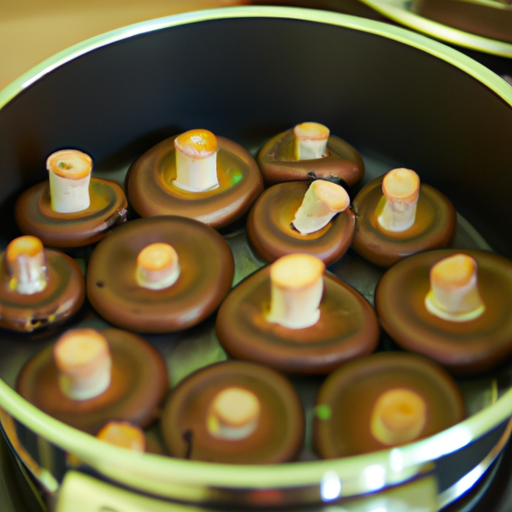

No Responses